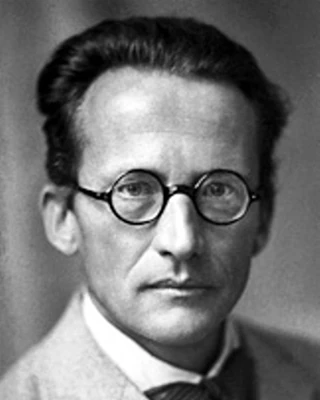
Born on August 12, 1887 in Vienna (Austria-Hungary) into a wealthy and cultured family, Erwin Schrödinger (1887-1961) grew up in a stimulating environment, immersed in both science (his father was a botanist) and the arts. He studied theoretical physics at the University of Vienna under Fritz Hasenöhrl (1874-1915), where he developed a passion for statistical mechanics and color theory. After earning his doctorate in 1910, he served as an artillery officer during World War I, while continuing his research on radioactivity.
In 1926, Schrödinger published a series of foundational papers introducing:
His approach, initially in competition with Werner Heisenberg's matrix mechanics (1901-1976), was mathematically proven equivalent by John von Neumann (1903-1957). He received the Nobel Prize in 1933 (shared with Paul Dirac (1902-1984)) for this major discovery.
In 1935, Schrödinger proposed his famous cat paradox to illustrate the interpretation problems of quantum mechanics (superposition of states, measurement). This paradox became a cornerstone of discussions about the Copenhagen interpretation, which he strongly criticized. His exchanges with Albert Einstein (1879-1955) and Niels Bohr (1885-1962) marked the history of physics, opposing realism and probabilism.
Opposed to Nazism, Schrödinger left Germany in 1933 and taught at Oxford, Graz, and then Dublin (where he founded the IAS).
He returned to Austria in 1956 and died in Vienna on January 4, 1961, leaving an interdisciplinary legacy.
| Field | Year | Key Contribution | Impact |
|---|---|---|---|
| Quantum Mechanics | 1926 | Equation \(\hat{H}\Psi = E\Psi\) | Foundation of quantum chemistry and modern electronics |
| Philosophy of Science | 1935 | Cat paradox | Debates on quantum measurement (decoherence, many-worlds) |
| Theoretical Biology | 1944 | What is Life? | Inspiration for the discovery of DNA structure |